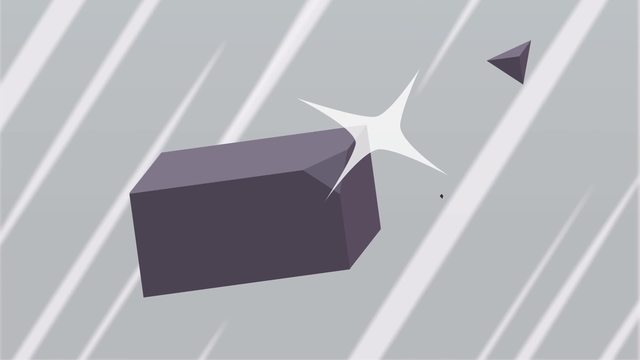Using a Ruler, Protractor, and Compass
- Using Measurement Tools
- Using Measurement Tools – Explanation
- Using Measurement Tools – Example or Practice
- How to Use a Ruler
- How to Use a Protractor
- How to Use a Compass


Basics on the topic Using a Ruler, Protractor, and Compass
Using Measurement Tools
In various aspects of daily life and in educational settings, precise measurement tools like rulers, protractors, and compasses are essential. These tools help in drawing lines, measuring angles, and constructing circles accurately.
Measurement Tools are instruments used to determine lengths, angles, and circles. A ruler measures length, a protractor measures angles, and a compass is used for drawing circles and arcs.
Using Measurement Tools – Explanation
These tools are foundational for tasks in construction, art, science experiments, and mathematics. Here's a breakdown of each:
| Tool | Uses | Units | Illustration Request |
|---|---|---|---|
| Ruler | Measuring length and drawing straight lines. | Inches and centimeters | Illustration request: |
| Protractor | Measuring and drawing angles. | Degrees | Illustration request: |
| Compass | Drawing circles or arcs. | Not applicable as it measures radius rather than units. | Illustration request: |
Using Measurement Tools – Example or Practice
Understanding how to use these tools effectively can enhance precision in projects and assignments. Here’s how to use each tool:
How to Use a Ruler
Steps: Place the ruler edge along the object or line you want to measure. Read the measurement from the edge to the desired point.
How to Use a Protractor
Steps: First place its midpoint at the vertex of the angle. Ensure one arm of the angle aligns with the zero mark on the protractor's bottom edge. Then read the angle measurement from the correct scale: use the inner numbers for angles opening to the right and the outer numbers for those opening to the left.
How to Use a Compass
Steps: Place the point on the paper where you want the center of the circle. Adjust the pencil lead to reach the desired radius, then rotate the compass to draw the circle. The radius of the circle about is 3 cm.
Identifying an Appropriate Measuring Tool
In school projects and everyday tasks, it's really helpful to know how to use different tools like rulers, protractors, and compasses. Each tool has a special job, from measuring in centimeters to angles and measuring angles, or showing you what is a circle. Knowing which tool to use can make your work better and easier. In this section, we'll look at different situations to help you pick the best tool for each task, so you can always get great results.
Understanding Different Types of Compasses
It's important to distinguish between the navigational compass and the drawing compass. The navigational compass is used for finding directions, relying on Earth's magnetic fields. On the other hand, the drawing compass, common in classrooms, is designed for drafting precise circles and arcs. This tool measures distances on paper, not directions, and is essential for geometry and technical drawing.
Using Measurement Tools – Summary
Key Learnings from this Text:
Measurement tools like rulers, protractors, and compasses have specific uses in measuring and drawing.
Each tool requires particular methods of application for accurate results.
Practical knowledge of these tools enhances efficiency and precision in various tasks.
Using Measurement Tools – Frequently Asked Questions
Transcript Using a Ruler, Protractor, and Compass
Harry and Lloyd have been inching across the country at a snail's pace, collecting whatever they can find and trying to offload it on unsuspecting customers. They've recently found some strange geometric tools on their journey, but they don't know how they work. Let's see if we can help Harry and Lloyd find out how to use a ruler, protractor, and compass. Here's the first item: a ruler! Woah! Kids, don't try this at home! So what's a ruler really good for? First off, we can use it as a straight-edge, to construct segments rays and lines. Second, we can use a ruler to measure lengths. The tick marks help us discover how long a line segment is in inches or in centimeters. How long is this segment? It is 5 inches long. It's also 12.7 centimeters. Finally, we can draw segments of a desired length. If we want a four inch segment we start here and end here. When a measurement is between the tick marks, we can't be completely sure how long it is. That's why measurements with rulers are always approximations. Now, what is this thing for? Right. Of course! Actually, this is a protractor. We use it to measure angles and construct angles. A protractor is marked with the 180 degrees of a semi-circle. The center of the circle is here. Zero degrees is here and 180 degrees is here. But 0 to 180 is marked in reverse too. Why do they have the angle markings listed twice on a protractor? So we can measure angles that start on either the left side or the right side. To measure an angle place the center of the protractor at the vertex of the angle and match up the baseline of the protractor with one side. Find where the other side crosses the protractor and read the degrees there. Which of the two numbers is the measure of our angle? We need to make sure to choose from the same row that shows 0 degrees for the initial side. 130 degrees! We can also use a protractor to draw an angle of specific measure. Let's draw a 40 degree angle. First, we draw a vertex and an initial side. Then, place the center of the protractor on the vertex and line up the baseline. Where do we draw the terminal side of the angle? Look for 40 degrees in the correct row put a point there then draw the terminal side of the angle. Done and "done-er"! Back to Harry and Lloyd. What's this contraption for? This is a compass. It consists of two legs connected at a hinge. One leg has a point at the end while the other has a pencil. We can adjust the distance between the point and the pencil and when it's fixed, it should stay at that distance. With a compass we can construct circles, as well as copy segments without measuring. To construct a circle, create a center point put the needle there and rotate the compass. The distance between the needle and the pencil stays the same, so we know we have a circle. Now let's make a copy of this line segment. First, choose where one of the endpoints of the copy will be. Next, we match the needle and pencil with the endpoints of the given segment. The length of the line segment is now saved in the compass as the distance from the needle to the pencil. Now, we make an ARC from the new endpoint. Any segment from here to the arc will be a perfect copy. For example, this line segment. Using a compass is better than using a ruler since it gives us an exact copy, and the ruler only gave us an approximate value for the length. That's why it's an important tool for geometric proofs. Before we see what Harry and Lloyd did with their compass, let's review the geometric tools we explored. A ruler is for measuring segments and drawing segments of a specific length. A protractor can be used to measure angles as well as draw angles of a specific measure. A compass constructs circles and copies segments without measuring. Let's see if Harry and Lloyd have discovered how to use these geometric tools properly. Guess not.
Using a Ruler, Protractor, and Compass exercise
-
Identify the appropriate tool.
HintsDifferent tools serve different purposes in the world of geometric shapes. Think about which of the given tools would be useful to create a perfect circle.
Use the process of elimination to decide which tools would be impossible to use to create a circle. Some tools can only create straight lines.
Here is an image of each option.
SolutionHarry should use a compass to construct the perfect circles for his art work.
-
Identify the purpose of a ruler.
HintsA ruler is used for measuring and drawing segments.
Rulers can be used to measure everyday items, such as a pencil.
There are 3 correct answers.
SolutionThe following scenarios would be best measured with a ruler:
- Measuring the distance on a map between two cities.
- Measuring the length of a worm found outside.
- Drawing a perfectly straight line on a school project.
-
Understand the purpose of tools used for various measurements.
HintsIf you want to find how long a pencil is, a ruler can be used to find the length in centimeters.
Look carefully at the images. Do you notice a tool with measurements from $0-180^{\circ }$. This unit of measurement is used for the size of an angle.
The compass can copy the length of a radius on a specific shape and then create this shape as well.
What shape do you know that has a radius?
SolutionRuler
- Straight edge to make different lines.
- Measures length of a line segment.
- Measures an angle in degrees.
- Constructs an angle.
- Copies line segments without measuring.
- Constructs circles.
-
Understand what a ruler, protractor, and a compass are used for.
HintsLength can typically be measured in inches or centimeters on a ruler.
Angle measurements are given in degrees and use this symbol: $^{\circ }$.
A circle is a shape where all points on the edge are equally far from the center. This distance from the center to the edge is called the radius and can be measured with a compass.
SolutionA protractor is used to measure and draw angles. It's a half-circle-shaped tool with degrees marked on it. You'll find it useful in math class, especially when you're studying shapes and need to figure out the exact degree of an angle.
A compass is a drawing tool used to make perfect circles. You can adjust its legs to change the size of the circle. It's great for art projects and math geometry work.
A ruler is a tool used to measure the length or width of objects. It's handy for drawing straight lines on paper. You can use it in art to make neat borders or in math to solve geometry problems.
-
Identify different geometric tools and how they are used.
HintsThink about what the name of each tool is and what figures it can construct or measure.
A ruler can be used to construct line segments or measure the length of relatively straight items.
A protractor measures angles in degrees.
A compass can be used to copy line segments and also construct circles.
SolutionA protractor can be used to create and measure angles.
A compass can be used to create perfect circles.
A ruler can be used to create and measure line segments.
-
Identify the correct tool that can be used to create the given design.
HintsThink about which tool helps you measure and draw exact angles. Lloyd needs each zig-zag to be exactly $44.5^{\circ}$, so he needs a tool that can accurately measure angles.
Zig-zags are made up of straight lines joined at angles. The key to getting the zig-zags right is making sure each angle is precise. Which tool helps you ensure that each angle in the zig-zag is the same?
One of these tools is used for drawing circles, one for measuring lines, and one for painting. Which one that is left is used for measuring angles?
SolutionLloyd will want to use a protractor to find the exact measurement of his zig-zag painting.
Protractors can measure angles and also be used to construct them.













It's good
Not close
Impressive
It’s okay